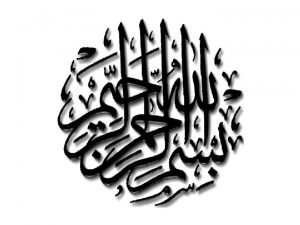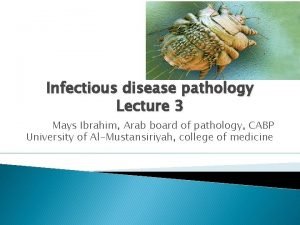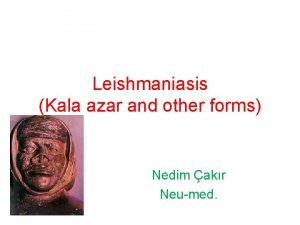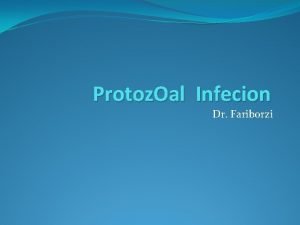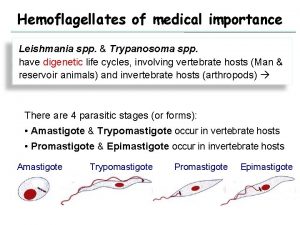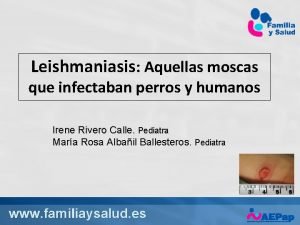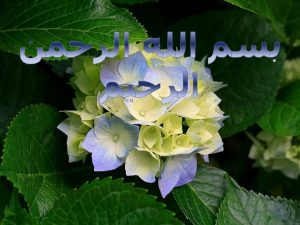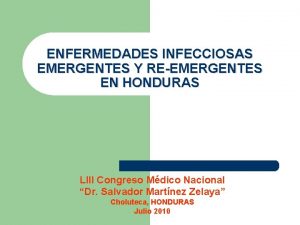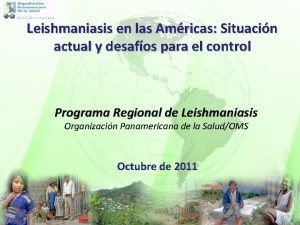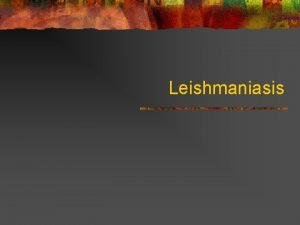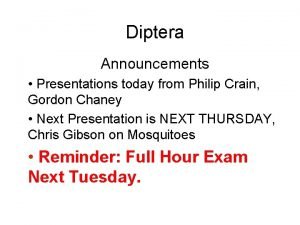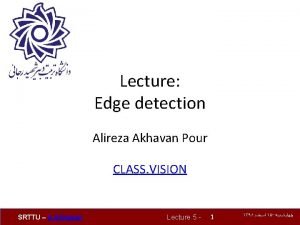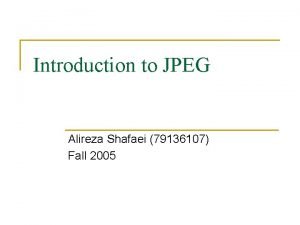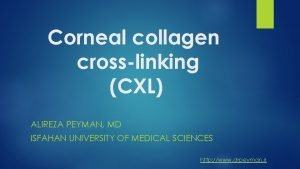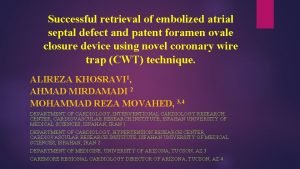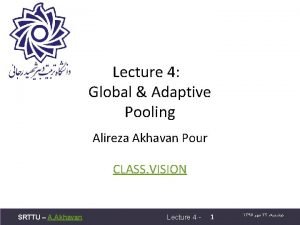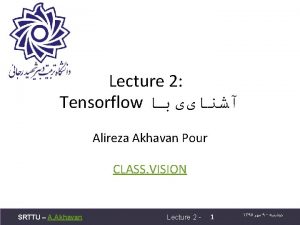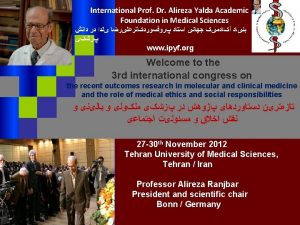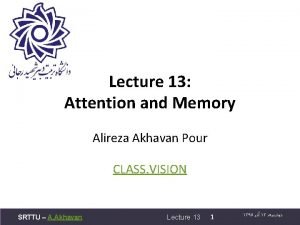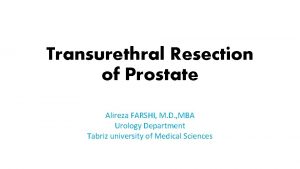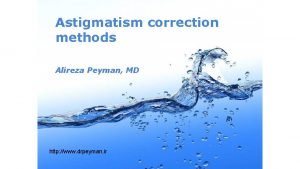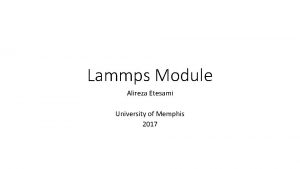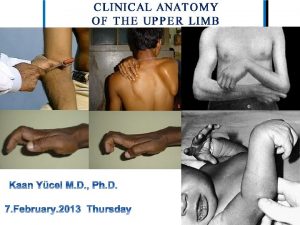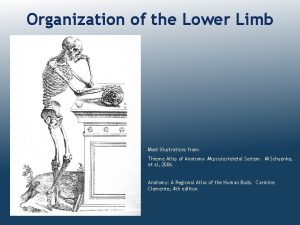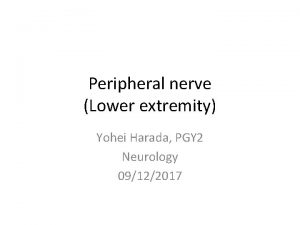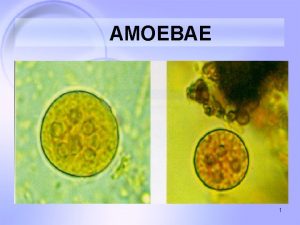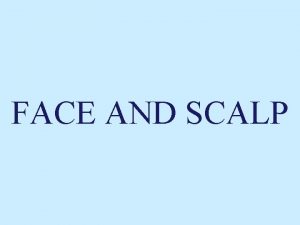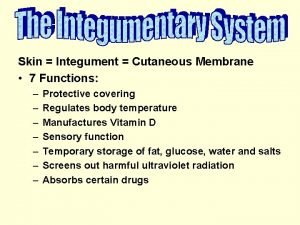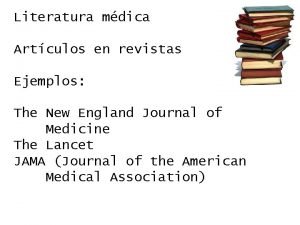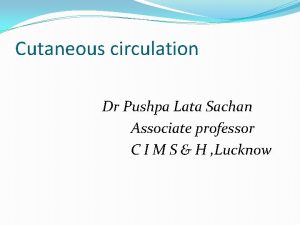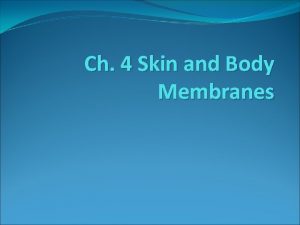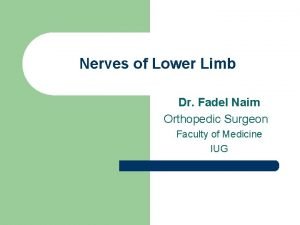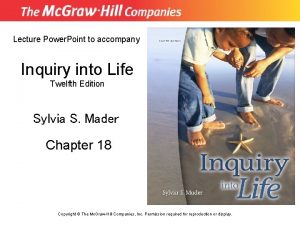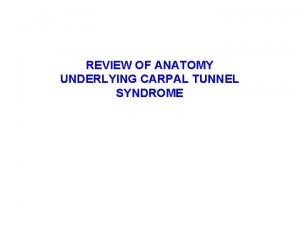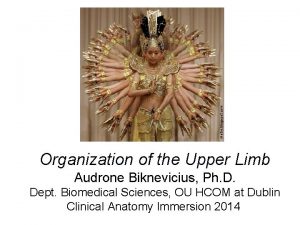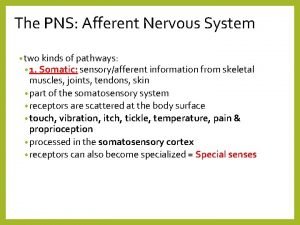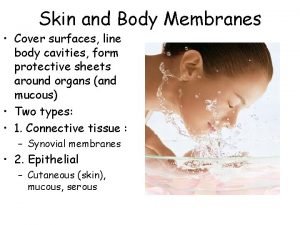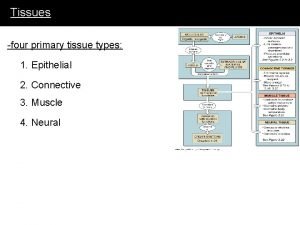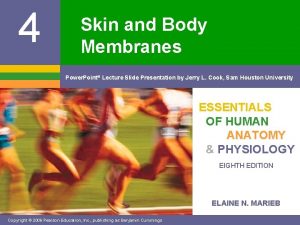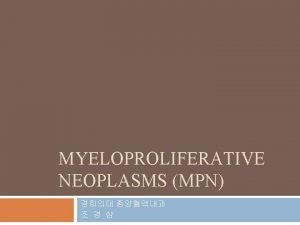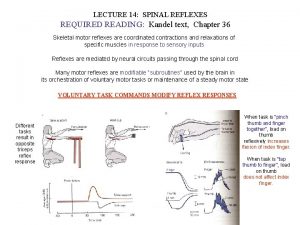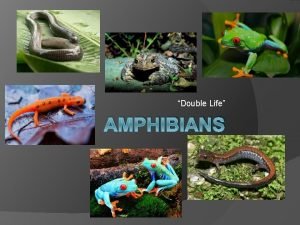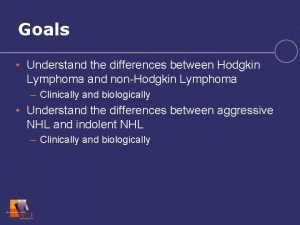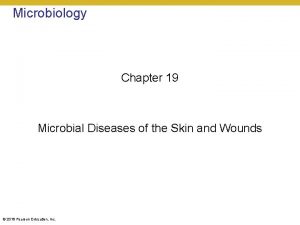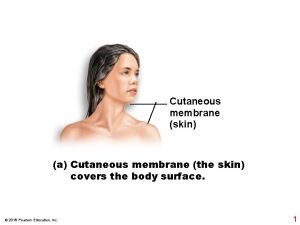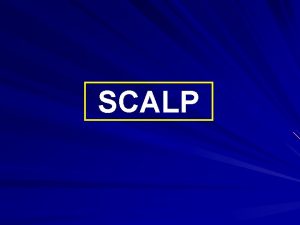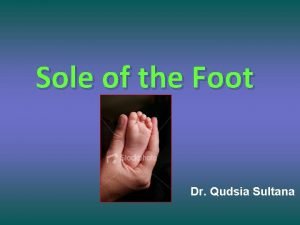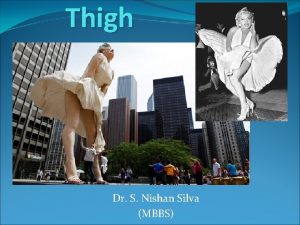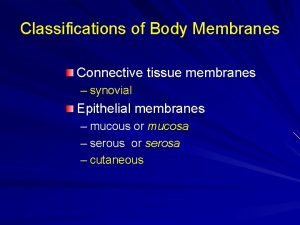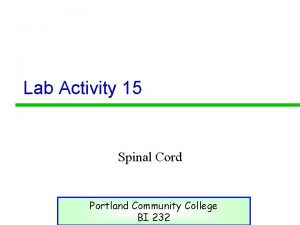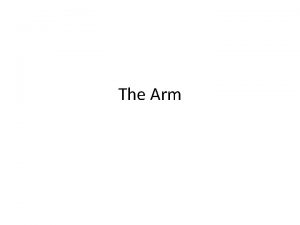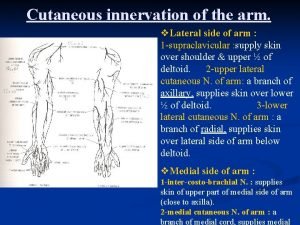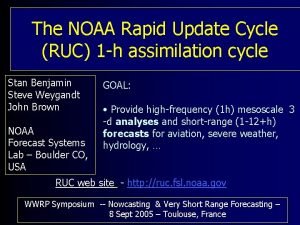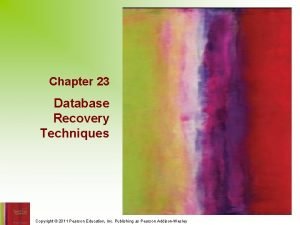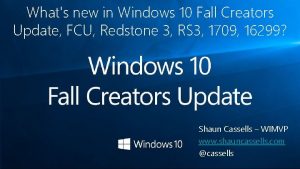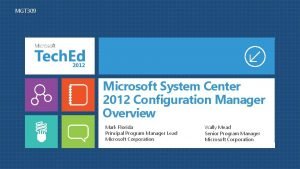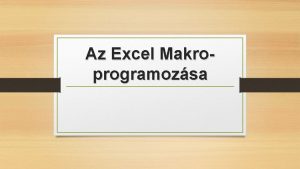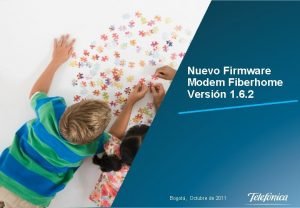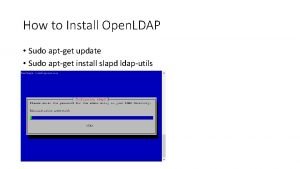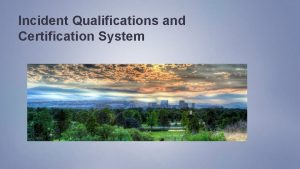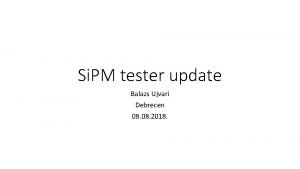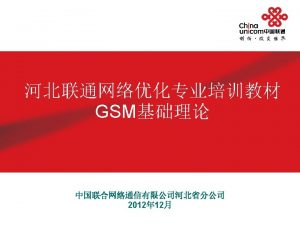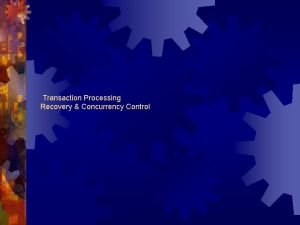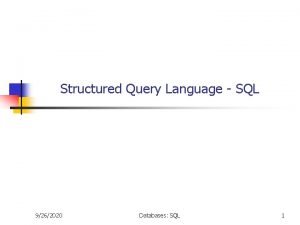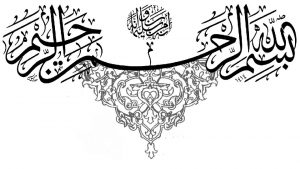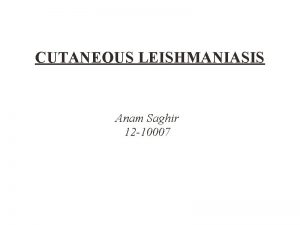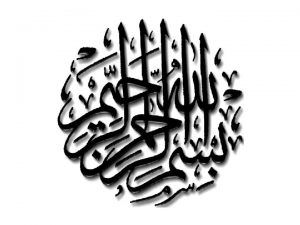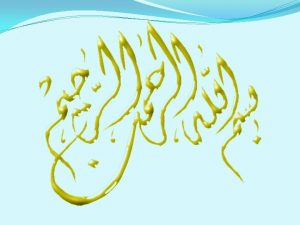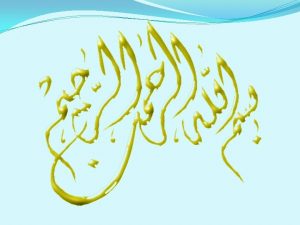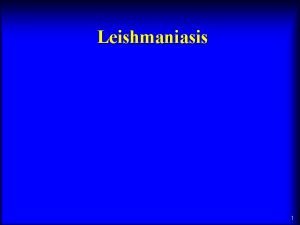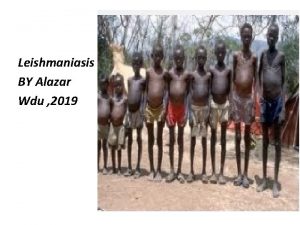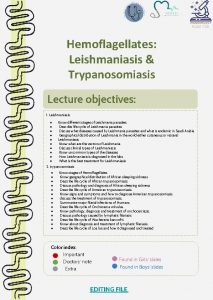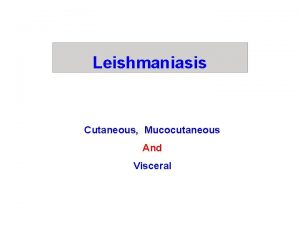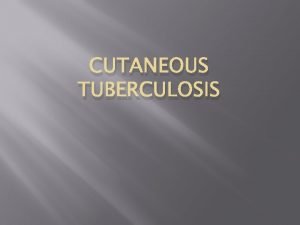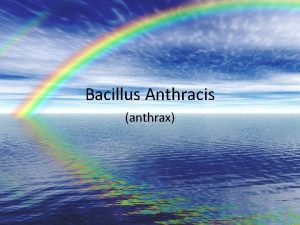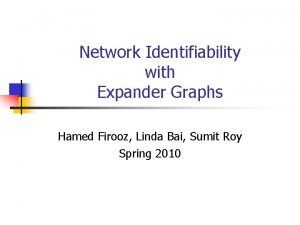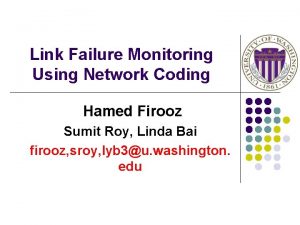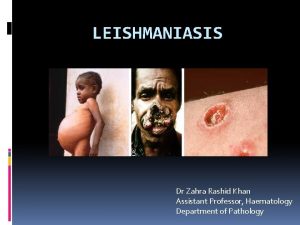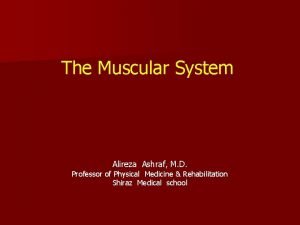Update on Cutaneous Leishmaniasis Alireza Firooz MD Professor










































































- Slides: 74


Update on Cutaneous Leishmaniasis Alireza Firooz, MD Professor of Dermatology Center for Research and Training in Skin Diseases and Leprosy Tehran University of Medical Sciences


Outline of the Presentation • • Background Classification and terminology Epidemiology Clinical manifestations Differential diagnosis Diagnosis Treatment Prevention

Background • Leishmaniases are a group of diseases caused by several specious of protozoa of the genus Leishmania which can result in a wide spectrum of clinical syndromes ranging from single cutaneous ulceration to systemic infections. • The protozoa are transmitted to mammals via the bite of the female sandfly.

Environment, reservoir, vector, parasite

Leishmaniases: Classification Leishmaniases Visceral Leishmaniasis Cutaneous Leishmaniasis (CL) Old World CL Post-Kala-Azar Dermal Leishmaniasis Diffuse Cutaneous Leishmaniasis Mucocutaneous Leishmaniasis New World CL Leishmania Recidivans Localized Cutaneous Leishmaniasis (LCL)

Old-World CL: Terminology • Synonyms: – – – Oriental sore Bouton d’orient Delhi boil Aleppo boil (evil) Baghdad sore • Sa’lak (Iran) • Sa’ldaneh (Afghanistan)

Epidemiology

Epidemiology • • 90 countries affected (77 developing ones) 350 millions at risk Prevalence: 12 millions Incidence 1. 5 -2 millions – ¾ CL – ¼ VL (mostly children) • Major health problem: – 5 countries visceral – 14 countries cutaneous leishmaniasis (CL) • 90% of VL in 7 countries • 80% of CL in 7 countries



Etiology and Pathogenesis

Old World Cutaneous Leishmaniasis (CL) • Caused by: – Leishmania major – L. tropica – L. aethiopica – L. donovani infantum

Life Cycle of Leishmania major (Zoonotic CL)

Life Cycle of Leishmania tropica Anthroponotic CL

Determinants of clinical manifestations • Parasite spp. • Host response (immune system condition) • Size of inoculation

Immunology • Th 1 response (g-INF, IL-2, IL-12) leads to localized cutaneous leishmaniasis with high CMI (+ leishmanin test) and low HI (no antibody) • Th 2 response (IL-4, IL-5, IL-10) leads to diffuse cutaneous and visceral leishmaniasis with low CMI (leishmanin test) and high HI (high antibody titre) • This paradigm is quite similar to leprosy: Th 1 response leads to tuberculoid leprosy and Th 2 response leads to lepromatous leprosy

Common Clinical Manifestations

CL Due to L. major • Also known as: wet, rural, zoonotic CL (ZCL) • Acquired in rural areas • Infecting organisms are also rodent parasites (and are poorly adapted to humans) • Hosts: gerbils esp. Rhombomys, Meriones (Asia, north Africa, Sudan); rodents esp. Avicanthus, Tatera • Vectors: Phlebotomus papatasii (Asia, north Africa, Sudan); P. duboscqi (Sub-Saharan savanna, Sudan)

CL due to L. major: clinical course < 2 months After 2 weeks 2 -3 months 2 -6 months

CL due to L. major: early lesion

CL due to L. major: crust formation

CL due to L. major: ulcerative lesion

CL due to L. major: healing and scar formation

CL due to L. tropica • Also known as: dry, urban, anthroponotic CL (ACL) • Towns in Middle East, Mediterranean basin, Central Asia • Reservoir: Humans, ? dogs • Vector: P. sergenti

CL due to L. tropica: clinical course >2 months Over 6 months The same stage 8 -12 months

CL due to L. tropica: early lesion

CL due to L. tropica: plaque stage

CL due to L. tropica: ulcerative lesion

CL due to L. tropica

Leishmaniasis recidivans • Also known as: lupoid leishmaniasis • In one of our recent studies from Bam (Iran), 18. 7% of ACL cases in school children had leishmaniasis recidivans. • Brown-red or brown-yellow papules appear, usually close to a scar of an old lesion of CL or actually in the scar. • They coalesce and form a plaque closely resembling lupus vulgaris, even to the formation of apple-jelly nodules

Leishmaniasis recidivans • The recidivans lesion is the result of a peculiar host reaction in which cellular immunity fails to sterilize the lesion, despite the presence of exaggerated hypersensitivity. • Although not as destructive as lupus vulgaris, lupoid leishmaniasis may persist and spread slowly for many years.

Leishmaniasis recidivans

Post-kala-azar dermal leishmaniasis (PKDL) • • Generally occurs 1 -3 years after recovery of VL L. donovani India and Bangladesh Dermatologic manifestations: – Small hypopigmented macules: 1 st appeared lesions enlarge to large irregular patches; develop on the chest, back, anterior thighs, arms and neck. – Erythematous macules: 2 nd appeared lesions; esp. on the face (with a malar distribution) and areas of hypopigmented patches). – Nodules: last developed lesions soft, painless, nonulcerative, yellowish-pink nodules; may appear on previous lesions or de novo; most commonly involve face and earlobs, trunk and genitalia.

Post-kala-azar dermal leishmaniasis (PKDL) PKDL Kala azar

PKDL: A rare presentation 1 1. Macroglosia with scrotal tongue 2. Hypopigmented macules on the arm 2 Source: Nikzad et al. Int J Dermatol 2005

Less Common Clinical Manifestations

Sporotrichoid type

Erysipeloid CL

Impetigenized type

Psoriasiform CL

Verruciform CL

CL lesions due to auto-inoculation

CL lesion on the scalp

Eye involvement

CL: Differential Diagnosis • Infections – Fungal • Sporotricosis, chromoblastomycosis, etc – Bacterial • Mycobacterioses – Leprosy, lupus vulgaris, etc • Staphylococcal/ streptococcal pyodermas – Ecthyma, impetigo, etc – Viral • Orf, warts, etc • Inflammatory – Psoriasis, lichen planus, DLE, sarcoidosis, etc • Neoplastic – BCC, SCC, CTCL, keratoacanthoma

CL: Differential Diagnosis Ecthyma Cutaneous Leishmaniasis

CL: Differential Diagnosis Erysipelas Cutaneous Leishmaniasis

CL: Differential Diagnosis Lupus Vulgaris Cutaneous Leishmaniasis

CL: Differential Diagnosis Lepromatous Leprosy Cutaneous Leishmaniasis

CL: Differential Diagnosis Sporotrichosis Cutaneous Leishmaniasis

CL: Differential Diagnosis Squamous cell carcinoma Cutaneous Leishmaniasis

CL: Differential Diagnosis Psoriasis Cutaneous Leishmaniasis

CL: Diagnosis • Clinical – History: residence in or history of travel to endemic areas, painless lesions, clinical course, similar cases in other family members – Physical examination: esp. induration, exposed sites • • Direct smear Culture on Nicolle-Novy-Mac Neal (NNN) medium Leishmanin Skin Test (LST) Histopathology Iso-enzyme electrophoresis (ISE) Can be used for Monoclonal antibodies(m. Ab) species identification Polymerase Chain Reaction (PCR)

Treatment


Overview of 50 qualified RCTs for inclusion in a systematic review published in 2007 Source: Khatami et al. J Am Acad Dermatol 2007

CL Treatment: Indications 1. Ulcer(s) that are located close to vital organs or are cosmetically important, such as on the face. 2. Lesions that show no evidence of healing for several months after the onset. 3. Special forms of CL, such as sporotrichoid or lymphangietic with satellite lesions, which indicates spreading. 4. CL due to L. tropica, which could subsequent systemic involvement or be the reservoir of infection. 5. PKDL requires high doses of systemic medications.

CL treatment: general considerations 1. Systemic treatments 2. Topical treatments (including intralesional injections) 3. Physical treatments (including surgery)

Systemic treatments • Pentavalent antimonies – Meglumine antimoniate (Glucantime®) – Sodium stibogluconate (Pentostam ®) • Azole drugs – Itraconzaole, fluconazole, ketaconazole • Other treatments: – Combination of pentavalent antimonies to other drugs e. g. oral allopurinol – Dapsone, rifampicin, isoniazide, allopurinol, pentamidine, terbinafine, zinc sulfate, oral miltefosine

Treatments: Topical and intralesional • Intralesional pentavalent antimonies injections – Meglumine antimoniate (Glucantime®) – Sodium stibogluconate (Pentostam ®) • Paromomycin ointment

Treatment: Physical methods • Cryotherapy – Alone – Combined to other treatments e. g. i. l. pentavalent antimonies • • • Thermotherapy CO 2 laser Photodynamic therapy (PDT) Curettage Surgery

National Guideline for Treatment of CL in Iran • Zoonotic Cutaneous Leishmaniasis (ZCL) can be left untreated if patient accepts unless: – Diameter larger than 3 cm – Number of lesions more than 3 – Location on face or joints – Sporotrichoid lesions • All cases of Anthroponotic Cutaneous Leishmaniasis (ACL) should be treated.

Local Treatment National Guideline for Treatment of CL in Iran • Local treatment can be used except: – Lesions around vital organs (eye, ear, mouth) – Lesions on joints – Lesions larger than 3 cm – Number of lesions more than 5 – Sporotrichoid lesions

Local treatment National Guideline for Treatment of CL in Iran Cont’d • Combination of intralesional injection of antimonial weekly and cryotherapy with liquid nitrogen biweekly for a maximum of 12 weeks • Cryotherapy should always be done prior to injection. • In certain cases each traetment modality can be used alone (for example cryotherapy alone in pregnant women)

Systemic Treatment National Guideline for Treatment of CL in Iran • Indications: – Lesions around vital organs (eye, ear, mouth) – Lesions on joints – Lesions larger than 3 cm – Number of lesions more than 5 – Sporotrichoid lesions – Lesions not responded to local treatment

Systemic Treatment National Guideline for Treatment of CL in Iran Cont’d • Dosage: 20 mg/kg/day Sb+5 (equal to 75 mg/kg/day of meglumine antimoniate or Glucantim) for a maximum of 3 vials daily • Preparations: – Glucantim: 405 -415 mg Sb+5 equivalent to 1500 mg Glucantim in each 5 m. L vial for IM injection – Pentostam: 600 mg Sb+5 in each 6 m. L vial for IM or IV injection • Duration: 2 weeks for ZCL and 3 weeks for ACL, which can be repeated if necessary after 4 -6 weeks of rest

Side effects National Guideline for Treatment of CL in Iran • Common but rarely severe – – – – – Pain GI complaints Myalgia Headache Skin rash Hepatotoxicity Nephrotoxocity Arrythmia Pnacreatitis

Contraindications National Guideline for Treatment of CL in Iran • • • Hepatitis Pancreatitis Myocarditis Renal failure Pregnancy Lactation

Work up National Guideline for Treatment of CL in Iran • CBC, LFT, RFT, ECG if: – Age over 60 years – History of underlying systemic disease – Concomitant drug use

Prevention

CL: Prevention • Drugs unsatisfactory or too expensive • Environmental changes – Vector control impractical, unsafe for environment – Reservoir control: impossible or impractical (short term success in China, S. Arabia, India) • Leishmanization • Vaccines – First generation – Second generation – Third generation

Thank you for your attention!
 Cl
Cl Deferred update and immediate update
Deferred update and immediate update Syphilis transmission
Syphilis transmission Leishmaniasis
Leishmaniasis Visceral leishmaniasis
Visceral leishmaniasis Cl
Cl Infectaban
Infectaban Tarık zaher
Tarık zaher Leishmaniasis
Leishmaniasis Leishmaniasis
Leishmaniasis Leishmania donovani
Leishmania donovani Visceral leishmaniasis
Visceral leishmaniasis Promotion from associate professor to professor
Promotion from associate professor to professor Alireza yalda
Alireza yalda Alireza akhavanpour
Alireza akhavanpour Alireza shafaei
Alireza shafaei Ctk lasik
Ctk lasik Alireza khosravi
Alireza khosravi Alireza yalda
Alireza yalda Adaptive pooling pytorch
Adaptive pooling pytorch Dr. alireza amirbaigloo, md, endocrinologist
Dr. alireza amirbaigloo, md, endocrinologist Dr. alireza amirbaigloo, md, endocrinologist
Dr. alireza amirbaigloo, md, endocrinologist Alireza akhavan github
Alireza akhavan github Shortlyaia
Shortlyaia Alireza akhavanpour
Alireza akhavanpour Alireza farshi
Alireza farshi دکتر علیرضا پیمان
دکتر علیرضا پیمان Alireza ahadi
Alireza ahadi Alireza etesami
Alireza etesami Palmar cutaneous branch of median nerve
Palmar cutaneous branch of median nerve Lumbo sacral plexus
Lumbo sacral plexus Os coxae
Os coxae Lateral femoral cutaneous nerve
Lateral femoral cutaneous nerve Cutaneous amebiasis
Cutaneous amebiasis Cutaneous innervation of scalp
Cutaneous innervation of scalp Cutaneous membrane definition
Cutaneous membrane definition Gnumed
Gnumed Triple response and cutaneous circulation
Triple response and cutaneous circulation Free edge
Free edge Lateral cutaneous nerve of forearm
Lateral cutaneous nerve of forearm Iliohypogastric nerve distribution
Iliohypogastric nerve distribution Cutaneous receptors
Cutaneous receptors Palmar cutaneous branch of median nerve
Palmar cutaneous branch of median nerve Upper limb
Upper limb Cutaneous mechanoreceptors
Cutaneous mechanoreceptors Skin and body membranes
Skin and body membranes Tissue
Tissue Cutaneous membrane
Cutaneous membrane Cutaneous mastocytosis
Cutaneous mastocytosis Cutaneous reflex
Cutaneous reflex Double life animal
Double life animal Hodgkin's lymphoma classification
Hodgkin's lymphoma classification Cutaneous mycoses
Cutaneous mycoses Cutaneous membrane
Cutaneous membrane Cutaneous innervation of scalp
Cutaneous innervation of scalp Cutaneous innervation of sole of foot
Cutaneous innervation of sole of foot Femeral vein
Femeral vein Connective tissue membranes
Connective tissue membranes Lateral grey horn function
Lateral grey horn function Cutaneous innervation of arm
Cutaneous innervation of arm Glands in integumentary system
Glands in integumentary system Arm innervation
Arm innervation Replace
Replace Recovery techniques based on immediate update
Recovery techniques based on immediate update Fall creators update whats new
Fall creators update whats new Microsoft update
Microsoft update Application screen update false
Application screen update false How to develop a beverage product
How to develop a beverage product Fiberhome hg6245d firmware download
Fiberhome hg6245d firmware download Aptget update
Aptget update Iqcs nwcg
Iqcs nwcg Hamamtsu
Hamamtsu Gsm tdma
Gsm tdma Temporary update problem in dbms
Temporary update problem in dbms Structured query language (sql) is an example of a(n)
Structured query language (sql) is an example of a(n)
